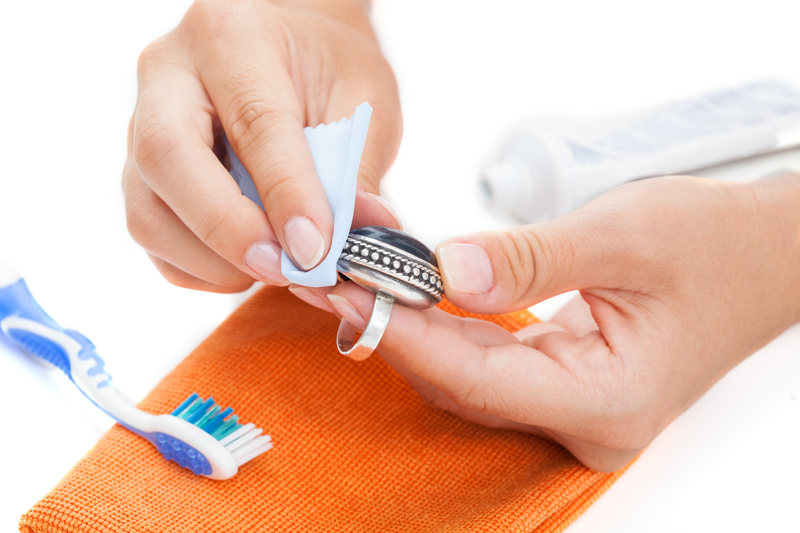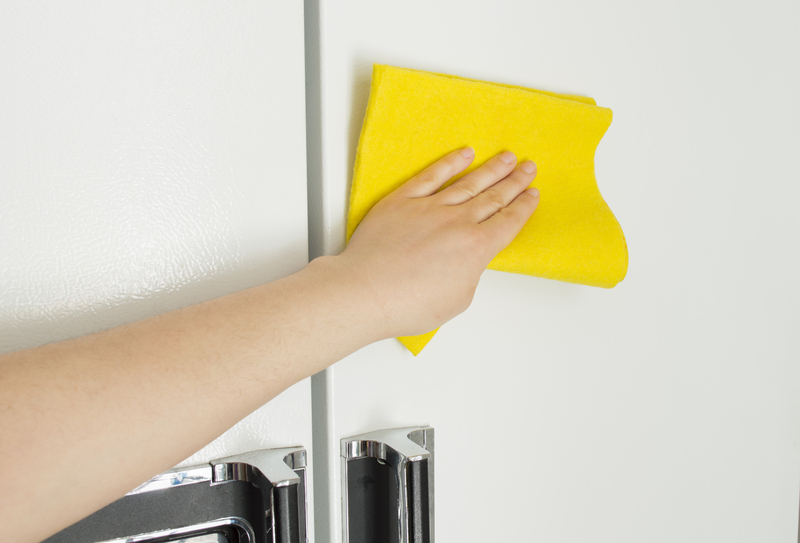Harness the Science of Effective Cleaning
Posted on 30/08/2025
Harness the Science of Effective Cleaning: Unlock a Cleaner, Healthier Environment
Effective cleaning is far more than just a daily chore or an aesthetic pursuit--it is a cornerstone of health, productivity, and well-being. In our homes, workplaces, and public spaces, getting cleaning right is vital to minimize germs, reduce allergens, and foster environments that promote high quality of life. Are you ready to harness the science of effective cleaning? This comprehensive article delves into the science, methods, and best practices to help you achieve a truly clean space--and know why it matters.
Understanding the Fundamentals of Effective Cleaning
The core of effective cleaning lies in understanding what "clean" truly means. It's not just about what looks tidy; it's about removing unseen contaminants--dust, bacteria, viruses, molds, and allergens. With the right knowledge and strategies, anyone can elevate their cleaning routine from superficial to scientific.
Why It Matters: The Health Benefits of Scientific Cleaning
- Reduces Disease Transmission: Effective cleaning physically removes pathogens, decreasing the risks of sickness.
- Allergen Control: Cleaning reduces the presence of pet dander, dust mites, and mold spores responsible for allergy symptoms.
- Enhances Indoor Air Quality: Fewer particulates in the air means better breathing and overall wellness.
- Mental Well-being: A clean environment reduces stress and improves mental clarity.

The Science Behind Cleaning: How It Works
Cleaning is not just about making things look nice--it's based on scientific principles that physically and chemically remove unwanted substances. To harness the science of effective cleaning, it's essential to understand the main cleaning actions:
1. Mechanical Action
This involves scrubbing, wiping, or agitating surfaces to dislodge debris and microorganisms. Think about using a brush to scrub a sink or a cloth to wipe countertops--the friction is vital.
2. Chemical Action
Cleaning agents (such as soaps, detergents, and disinfectants) dissolve or break down tough grime, grease, and biofilms. The choice of cleaning product should match the type of soil--acidic cleaners for minerals, alkaline for grease, etc.
3. Thermal Action
Warm or hot water enhances both chemical and mechanical actions. Elevated temperatures help loosen dirt and boost the effectiveness of cleaning agents.
4. Time
The duration a cleaning solution remains in contact with a surface is crucial. Disinfectant needs enough "dwell time" to destroy pathogens--more contact, more effective cleaning.
Types of Cleaning: From Surface Cleaning to Deep Sanitization
Understanding the difference between basic cleaning and more intensive processes is key as you harness the science of cleaning effectively:
- Basic Cleaning: Removes visible dirt, dust, and debris.
- Sanitizing: Lowers microorganism counts to safe levels, essential for kitchens and bathrooms.
- Disinfecting: Kills a broader range of viruses and bacteria via chemical agents.
- Sterilizing: Destroys all microbial life, required only in medical or specialized environments.
Key Scientific Principles in Effective Cleaning
Soil Removal: The Four Basic Components
- Detachment: Loosen contaminants from the surface.
- Suspension: Keep particles suspended so they don't re-settle.
- Emulsification: Break fat and oil into tiny droplets that can be washed away.
- Rinsing: Flush suspended soils off the surface completely.
Applying these principles in your cleaning routines means better, longer-lasting results every time.
Choosing the Right Cleaning Agents
The market offers a dizzying array of products, but not all are created equal. To harness the science of effective cleaning, choose wisely based on both surface type and contaminant:
1. Detergents
Break down and lift away general dirt or organic matter. Best for day-to-day general purpose cleaning.
2. Disinfectants
Contain antimicrobial agents proven to kill specific pathogens. Always follow the manufacturer's dwell time instructions for maximum efficacy.
3. Degreasers
Ideal for kitchen appliances, stovetops, and industrial settings; these break down stubborn fats and oils that soaps alone can't tackle.
4. Acidic Cleaners
Chemically dissolve mineral deposits and rust--often used in bathrooms for hard water stains and toilet bowls.
5. Abrasive Agents
Physically scour surfaces; must be used carefully on delicate materials to avoid scratching.
The Science of Safe Cleaning: Protecting Health & Environment
While achieving spotless surfaces is rewarding, it's important to recognize the impact of certain cleaners on personal health and the environment. Here's how to clean safely:
- Ventilate: Always allow airflow to disperse fumes from cleaning chemicals.
- Wear Protection: Gloves and masks help avoid skin and respiratory irritation caused by potent solutions.
- Natural Alternatives: Harness the science of cleaning with eco-friendly ingredients like vinegar, baking soda, and citrus oils where possible.
- Follow Instructions: Adhere to usage and dilution guidelines to maximize safety and cleaning effectiveness.
Application Tips: Practical Science-Backed Cleaning Methods
The Right Sequence: Top to Bottom, Clean to Dirty
Gravity ensures that dust and debris fall downward, so always clean higher surfaces before lower ones. This avoids having to clean twice.
Color Coding and Zoning
Use color-coded cloths or equipment for distinct areas (kitchen, bathroom, living areas) to prevent cross-contamination and harness the science of effective cleaning with professional precision.
Mechanical Tools Enhance Results
- Microfiber Cloths: Traps dust and bacteria more effectively than cotton or paper.
- Vacuum Cleaners: High-efficiency particulate air (HEPA) filters capture ultra-fine particles and allergens.
- Steam Cleaners: Use heat to kill bacteria and loosen grime without harsh chemicals.
Harnessing Modern Technology for Advanced Cleaning
Today's advancements allow us to employ innovative cleaning technologies that leverage science:
- Ultraviolet (UV) Light: UV-C technology effectively neutralizes viruses and bacteria in healthcare and some home settings.
- Electrostatic Sprayers: These spray charged particles of disinfectant, which adhere to surfaces more completely for comprehensive sanitization.
- Robotic Cleaners: Automated vacuum and mopping robots use sensors and AI to target dirt and optimize cleaning routes.
Smart Cleaning Devices: The Future Is Now
- Environmental Sensors: Detect air quality, humidity, and even viral load for targeted cleaning interventions.
- App-Controlled Equipment: Allows remote monitoring, scheduling, and reporting to keep your spaces clean with minimal effort.
Effective Cleaning in Different Settings
Home Cleaning: Family Health First
- Focus Areas: Kitchens, bathrooms, and entryways are the most germ-prone and demand routine deep cleaning.
- Laundry: Wash linens, towels, and reusable cloths regularly in hot water to destroy bacteria and dust mites.
- Pest Prevention: Clean food residues and maintain waste areas to avoid attracting insects or rodents.
Workplace Hygiene
- High-Touch Surfaces: Desks, doorknobs, phones, and shared equipment require frequent disinfection.
- Air Quality: Implement routine HVAC maintenance and employ purifiers for optimal productivity and wellness.
- Employee Education: Training is crucial so everyone can consistently apply the science of effective cleaning.
Healthcare and Sensitive Environments
- Rigorous protocols: Follow CDC and WHO standards for disinfection and sterilization to minimize risk to vulnerable populations.
- Barrier Methods: Use gloves, gowns, and disposable wipes to contain contamination.
Common Cleaning Myths Debunked by Science
- "More product = more clean": Overuse leads to buildup and can leave harmful residues.
- "Disinfecting alone is enough": Physical cleaning is always needed before applying disinfectant for it to work effectively.
- "All germs are bad": Our bodies (and homes) contain many beneficial microbes. The key is managing--not eradicating--all bacteria.
- "Natural always means safe": Even natural substances like vinegar or lemon can damage some surfaces or cause irritation.
How to Measure Cleaning Effectiveness Scientifically
Adoption of science-backed measurement helps maintain standards:
- Visual Checks: Notice dust, streaks, or residues? It's a sign to clean further.
- Luminescence Testing: ATP (adenosine triphosphate) meters measure organic residue on surfaces--quick and quantitative.
- Culture Swabs: Laboratories can swab surfaces to count viable bacteria or fungi for gold-standard verification.

Simple Steps to Integrate Effective Cleaning Science at Home
- Identify High-Risk Areas: Doorknobs, remotes, countertops, and phones deserve extra attention.
- Use the Four Actions Model: Mechanical, chemical, thermal, and correct dwell time for best results.
- Choose Suitable Products: Match your cleaning agent to the surface and type of grime.
- Clean, THEN Disinfect: Always physically remove debris before applying sanitizers or disinfectants.
- Adopt Safe Practices: Protect yourself--and your environment--by ventilating and using eco-friendly alternatives where feasible.
Conclusion: Transform Your Cleaning Routine with Science
Harnessing the science of effective cleaning transforms your environment from superficially tidy to truly sanitary. By leveraging mechanical, chemical, and thermal principles, choosing right tools and practices, and dispelling common myths, you can ensure every cleaning session is efficient, thorough, and sustainable.
Whether you're maintaining a home, workplace, or specialized space, apply these science-based insights to enjoy a cleaner, healthier, and more productive life. Informed cleaning is truly effective cleaning.
Let's revolutionize the way we clean--one scientific step at a time!




